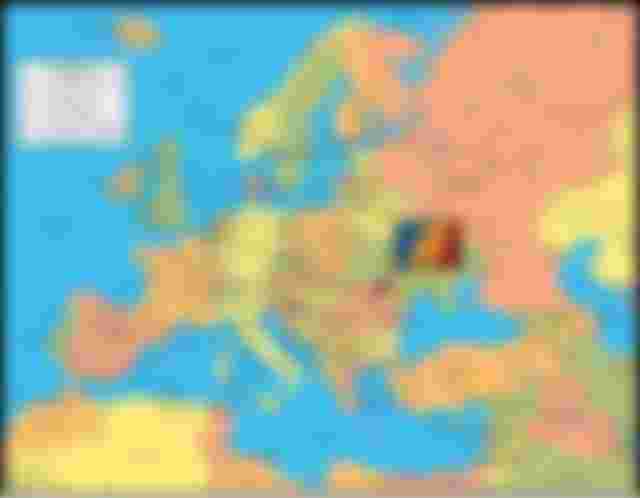Resources and possibilities!
Since the 1970s, the global population has doubled and the global gross domestic product has increased severalfold .
These trends have required large amounts of natural resources to fuel the economy and the corresponding improvements in human well-being that have brought it around the globe.
However, these benefits have come at a very high cost to our natural environment, ultimately affecting human well-being and creating problems within and between the countries of the world!
Since 1989, when Nicolae Ceausescu was executed by the Romanian people and until today, Tuesday, March 22, 2022, this issue of mineral resources in Romania has been discussed annually at the governmental level.
Let's see what Romania has today and what resources we have.

Romania offers a series of natural resources that have enriched the country's economy over time and developed us as a society. No matter how much we believe we are safe from environmental damage, we humans are dependent on ecosystems, as they affect every aspect of our well-being, including survival.
What are the most important natural resources in Romania?
Romania ranks 35th in the world's top 40 countries with the largest gold reserves at central banks, with a gold reserve of 103.7 tons.
In Romania, the most important quantities of gold have been found, over the years, in the so-called gold quadrilateral. This is an area in the Apuseni Mountains, which includes the mines in the area of Roşia Montană, Bucium, Baia de Arieş, Almaş .
Coal. There are resources of 9.7 billion tons and 299 deposits throughout the country. The exploitation activity is carried out in proportion of over 95% by the state.
Anthracite: two fields closed in the early 1990s.
Brown coal: two operating licenses.
Lignite: 193 fields, of which 41 in operation with reserves of 318 million tonnes and 168 unexploited or closed fields.
Iron ore: 39 deposits, with 57 million tons of possible reserves.
Manganese ore: two deposits in operation with reserves of one million tons. Possible reserves to be exploited in cessation deposits: 17 million tons.
Copper ore: 75 deposits, with 98 million tons of possible reserves.
Groundwater resources: 12 thousand cubic meters / day of natural mineral waters, 48 thousand cubic meters / day of therapeutic mineral waters, 19 thousand cubic meters / day of carbon dioxide and 21 thousand cubic meters / day of geothermal water.
Resources of muds and therapeutic peat: 29 perimeters, of which 11 concessioned with reserves of 5.3 million cubic meters and 18 with suspended activity with reserves of 7.9 million cubic meters.
Natural gas from the Black Sea. Romania will have a surplus of one billion cubic meters of natural gas next winter / During this spring, the first gas will come out of the Black Sea.
At the average annual production of 3.9 million tons of crude oil and in the conditions of a natural decline, it is estimated that Romania's current reserves will be depleted in a maximum of 20 years.
Energy production.
Hidroelectrica, the most performing company in the electricity market, has an installed capacity of 6382 MW. Hidroelectrica can reach a production peak of 3500-4000 MW.
The Oltenia Energy Complex, the second largest producer in Romania, with an installed capacity of 3240 MW, can produce at its peak, also in ideal conditions, 2900 MW.
Nuclearelectrica, which has a power installed in the two nuclear units, of 1400 MW, is the manufacturer with the largest constant.
Wind energy, which in terms of installed capacity competes with the largest producers (approximately 5000 MW) There are days when renewable energy (including photovoltaics here) exceeds 2000 MW production, but there are days when we are talking about tens of MW.
Then follow the two power plants belonging to the two major gas producers in Romania (Romgaz and Petrom), respectively the Iernut and Brazi power plants, which also contribute about 400 and 800 MW to the energy system, respectively. To these are added the production capacities of ELCEN and the few remaining plants in operation (in cogeneration), with an input of about another 2000 MW.
Forests , once one of the most forested European countries, Romania still massively exports timber.
Agriculture . The Romanian soil, the chernozem, is among the most fertile in Europe. If exploited efficiently, Romanian agriculture could feed 80 million people, meaning we would get a huge surplus that would go to export and bring billions of dollars to the country.
Tourism .Highlighted, tourism could be another significant source of income for Romania.
Automobile Dacia is the largest company in Romania, with sales of 24.6 billion RON.
Let's see a few:
Mamaia resort in Constanța. The main attractions of Mamaia resort are the Holiday Village, Aqua Magic and the gondola.
With all the above, we Romanians import energy and natural gas from the Russians.
That was the discussion on this topic.
Take care of the planet's resources!
